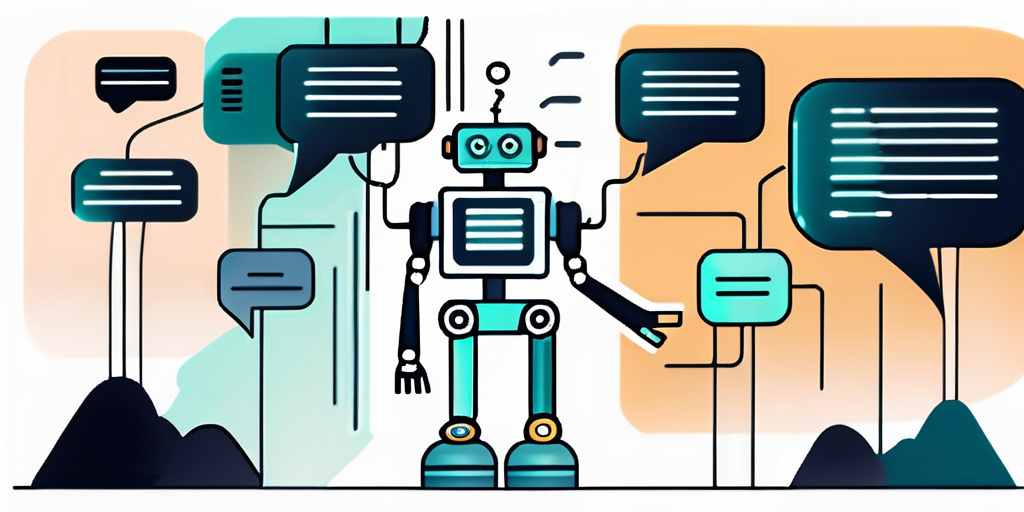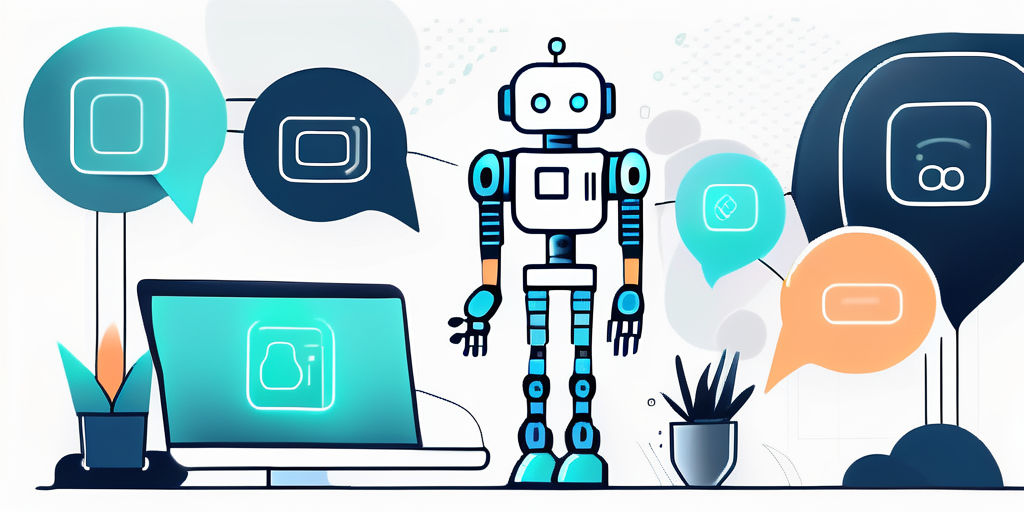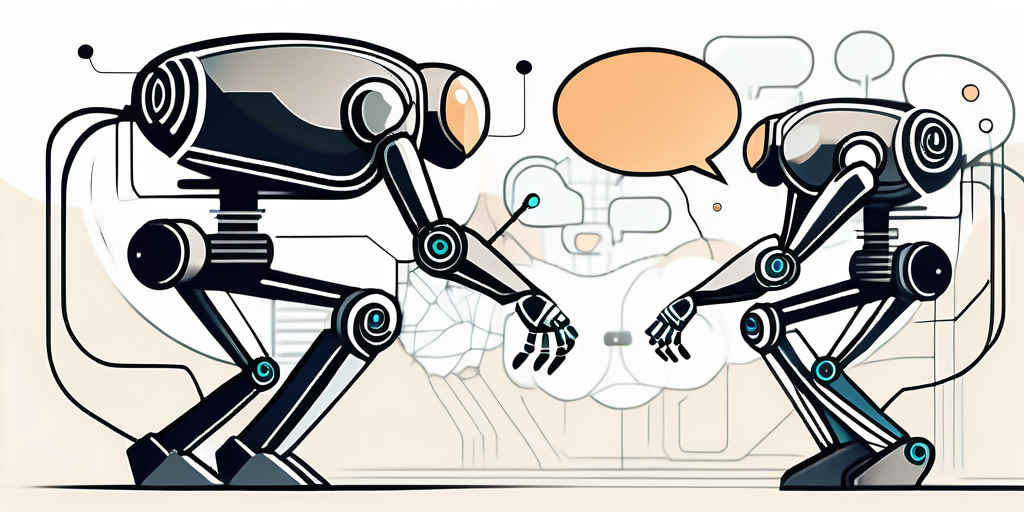Table of Contents

Google PPC Exposed: Experts Debate Smart Bidding ‘Price Fixing’ + Cost-Cutting Calculator
In the dynamic realm of digital marketing, Google PPC (Pay-Per-Click) advertising stands as a cornerstone strategy for businesses aiming to maximize their online presence. However, success in Google PPC ads isn’t merely about outbidding competitors—it’s about outsmarting the system. This comprehensive guide will delve into the intricacies of Google’s Smart Bidding algorithm and explore innovative strategies to optimize your ad spend, potentially lowering your Google PPC charges while maintaining performance.
Decoding Google’s Smart Bidding: Insights from Industry Experts
Recently, a fascinating exchange between John Moran, a respected PPC expert, and Ginny Marvin, Google Ads Product Liaison, offered rare insights into the inner workings of Google’s Smart Bidding algorithm. This conversation sparked discussions about its implications for advertisers engaged in Google PPC advertising.
The Official Word from Google
Ginny Marvin explained that Smart Bidding uses conversion signals to predict conversion likelihood and determine bidding strategies. She emphasized that the system considers various contextual signals automatically, focusing on combinations that significantly impact conversion rates.
John Moran’s Interpretation
John Moran, Co-Founder of Solutions 8, offered a more critical perspective. He suggested that Smart Bidding essentially “price fixes” based on perceived value aligned with advertisers’ goals and targets. This interpretation implies that Google’s algorithm isn’t just adjusting bids dynamically but setting prices based on its valuation of potential clicks.
🤔 Curious about Google's Smart Bidding? Discover how it impacts your ad's performance and CPC in our latest video. Watch now to uncover the truth about price-fixing! https://t.co/zSopQqF2Hl#digitalmarketing #googleads #ppc pic.twitter.com/g9aewCCmmh
— Solutions 8 (@solutions_8) August 18, 2024
The Hidden Dynamics of Google PPC Pricing
Understanding these mechanics is crucial for anyone involved in Google PPC advertising. Let’s break down the key factors at play:
- Conversion Value Influence: Google’s algorithm factors in the monetary value of your conversions when adjusting bids. Higher perceived values can lead to more aggressive bidding and potentially higher CPCs (Cost-Per-Click).
- CPC Volatility: Smart Bidding can create significant fluctuations in your CPCs. A day of low-cost clicks might be followed by a spike in prices as the algorithm adjusts to optimize for better conversion value.
- The Balancing Act: Advertisers face the challenge of balancing ROAS (Return on Ad Spend) goals with cost stability. The automated nature of Smart Bidding can sometimes lead to unpredictable performance swings.
Theoretical Approaches to Google PPC Campaign Optimization
Given these insights, how can advertisers potentially lower their Google PPC charges without sacrificing performance? Here are some strategies to consider:
1. The Conversion Value Adjustment Strategy
One intriguing approach is to intentionally set lower conversion values in your Google Ads account. The theory is that by telling Google your conversions are worth less, you might induce the algorithm to bid less aggressively, potentially lowering your CPCs.
Key Considerations:
- CPC Sensitivity (ε CPC ): Monitor how much your CPC changes when you adjust conversion values.
- Conversion Rate Sensitivity (ε CR ): Be aware that lowering conversion values might affect your conversion rates.
- Bid Adjustment Multiplier (β): Understand how much your bids are affected by conversion value changes.
- Conversion Rate Degradation (γ): Keep an eye on potential drops in conversion rates as you adjust values.
2. Implement A/B Testing
Run parallel campaigns with different conversion value settings to compare performance metrics. This approach can help you find the sweet spot between lower CPCs and maintaining conversion quality.
3. Fine-Tune Your Bidding Strategies
If you’re using automated bidding strategies like Target ROAS, remember that these rely heavily on accurate conversion data. Adjust your approach based on the results of your tests.
4. Leverage Google Keyword Planner
Use Google Keyword Planner to identify high-value, low-competition keywords. This can help you find opportunities where lower bids might still yield quality traffic, potentially reducing your overall Google PPC charges.
5. Monitor and Adjust Regularly
The digital advertising landscape is constantly evolving. Regularly review your Google PPC charges and performance metrics to ensure your strategies remain effective.
A Novel Concept: The Conversion Value Optimization Model
For those looking to take their Google PPC optimization to the next level, we’ve developed an advanced approach. This model aims to determine the optimal percentage by which to reduce your conversion value input into Google Ads, potentially leading to lower CPCs while balancing conversion rates and maximizing ROI.
Understanding the Key Variables
- Initial CPC (CPC_0): The cost per click before any adjustment.
- Initial Conversion Rate (CR_0): The conversion rate before any adjustment.
- Initial Conversion Value (CV_0): The actual value of each conversion.
- Conversion Value Adjustment (dCV): The percentage change in conversion value (this is what we need to optimize).
- Bid Adjustment Multiplier (β): Represents how much Google adjusts the bid based on perceived conversion value.
- CPC Sensitivity (ε_CPC): The elasticity of CPC to changes in conversion value. This represents the non-linear relationship between the conversion value change and CPC.
- Conversion Rate Sensitivity (ε_CR): The elasticity of conversion rate to changes in conversion value.
- ROI Target (ROI_T): The target return on investment you want to achieve.
The Mathematical Model
Our goal is to maximize profit, which can be expressed as:
The Mathematical Approach: How to Optimize Your Conversion Value Adjustment
To determine the optimal percentage by which to adjust your conversion value, we must maximize profit using the following formula:
The Hidden Dynamics of Google PPC Pricing
Understanding these mechanics is crucial for anyone involved in Google PPC advertising. Let’s break down the key factors at play:
- Conversion Value Influence: Google’s algorithm factors in the monetary value of your conversions when adjusting bids. Higher perceived values can lead to more aggressive bidding and potentially higher CPCs (Cost-Per-Click).
- CPC Volatility: Smart Bidding can create significant fluctuations in your CPCs. A day of low-cost clicks might be followed by a spike in prices as the algorithm adjusts to optimize for better conversion value.
- The Balancing Act: Advertisers face the challenge of balancing ROAS (Return on Ad Spend) goals with cost stability. The automated nature of Smart Bidding can sometimes lead to unpredictable performance swings.
Theoretical Approaches to Google PPC Campaign Optimization
Given these insights, how can advertisers potentially lower their Google PPC charges without sacrificing performance? Here are some strategies to consider:
1. The Conversion Value Adjustment Strategy
One intriguing approach is to intentionally set lower conversion values in your Google Ads account. The theory is that by telling Google your conversions are worth less, you might induce the algorithm to bid less aggressively, potentially lowering your CPCs.
Key Considerations:
- CPC Sensitivity (εCPC): Monitor how much your CPC changes when you adjust conversion values.
- Conversion Rate Sensitivity (εCR): Be aware that lowering conversion values might affect your conversion rates.
- Bid Adjustment Multiplier (β): Understand how much your bids are affected by conversion value changes.
- Conversion Rate Degradation (γ): Keep an eye on potential drops in conversion rates as you adjust values.
2. Implement A/B Testing
Run parallel campaigns with different conversion value settings to compare performance metrics. This approach can help you find the sweet spot between lower CPCs and maintaining conversion quality.
3. Fine-Tune Your Bidding Strategies
If you’re using automated bidding strategies like Target ROAS, remember that these rely heavily on accurate conversion data. Adjust your approach based on the results of your tests.
4. Leverage Google Keyword Planner
Use Google Keyword Planner to identify high-value, low-competition keywords. This can help you find opportunities where lower bids might still yield quality traffic, potentially reducing your overall Google PPC charges.
5. Monitor and Adjust Regularly
The digital advertising landscape is constantly evolving. Regularly review your Google PPC charges and performance metrics to ensure your strategies remain effective.
A Novel Concept: The Conversion Value Optimization Model
For those looking to take their Google PPC optimization to the next level, we’ve developed an advanced approach. This model aims to determine the optimal percentage by which to reduce your conversion value input into Google Ads, potentially leading to lower CPCs while balancing conversion rates and maximizing ROI.
Understanding the Key Variables
- Initial CPC (CPC_0): The cost per click before any adjustment.
- Initial Conversion Rate (CR_0): The conversion rate before any adjustment.
- Initial Conversion Value (CV_0): The actual value of each conversion.
- Conversion Value Adjustment (dCV): The percentage change in conversion value (this is what we need to optimize).
- Bid Adjustment Multiplier (β): Represents how much Google adjusts the bid based on perceived conversion value.
- CPC Sensitivity (ε_CPC): The elasticity of CPC to changes in conversion value. This represents the non-linear relationship between the conversion value change and CPC.
- Conversion Rate Sensitivity (ε_CR): The elasticity of conversion rate to changes in conversion value.
- ROI Target (ROI_T): The target return on investment you want to achieve.
The Mathematical Model
Our goal is to maximize profit, which can be expressed as:
The Mathematical Approach: How to Optimize Your Conversion Value Adjustment
To determine the optimal percentage by which to adjust your conversion value, we must maximize profit using the following formula:
Where:
- Revenue is determined by the product of clicks, conversion rate, and conversion value.
- Cost is calculated as clicks multiplied by CPC.
Given that clicks can be approximated as:

Our goal is to determine the optimal dCV that maximizes profit while balancing CPC, conversion rate, and overall ROI. This requires modeling the relationship between Google’s bid adjustments and your conversion value.
Here:
- β represents how much Google adjusts bids based on perceived conversion value.
- ε_{CPC} captures the sensitivity of CPC to conversion value changes.
- Modeling the Bid Adjustment Mechanism: Google’s bidding algorithm modifies CPC based on the perceived conversion value:
 Here:
Here:
- β represents how much Google adjusts bids based on perceived conversion value.
- ε_{CPC} captures the sensitivity of CPC to conversion value changes.
- Modeling the Impact on Conversion Rate: Conversion rates also change based on perceived value:
 Where:
Where:
- γ is the conversion rate degradation multiplier (negative values indicate potential declines).
- ε_{CR} reflects conversion rate sensitivity to value changes.
- Objective Function: We can now express profit as:

- Optimizing for
dCV: To find the optimaldCV, take the derivative of the profit function with respect todCVand solve for zero. This allows us to determine the point at which profit is maximized, balancing reduced CPCs with any negative impacts on conversion rates.
Implementing the Strategy in Real-World Campaigns
Given the complexity of this optimization, the best approach involves running simulations or using numerical optimization techniques such as gradient descent. Here’s a suggested approach:- Start with Estimated Values: Set reasonable starting points for variables like β, ε_{CPC}, and ε_{CR}. A β value between 0.3 and 0.7 typically works well for testing.
- Run Iterative Tests: Adjust your conversion value in small increments (e.g., 10%) and monitor how CPC, conversion rate, and overall ROI change.
- Analyze Historical Data: Use past performance data to better understand how sensitive your campaigns are to conversion value adjustments.
- Use A/B Testing: Run parallel campaigns with different conversion values and compare results.
Interactive Conversion Value Discount Calculator
To help you apply the advanced optimization strategy we’ve discussed, we’ve developed an interactive Conversion Value Discount Calculator. This tool allows you to input your specific campaign metrics and instantly calculate the optimal discount percentage for your conversion value.
How to Use the Calculator
- Initial CPC ($): Enter your current cost per click. For example, if you’re paying $2.50 each time someone clicks your ad, enter 2.50.
- Initial Conversion Rate (%): Input your current conversion rate as a percentage. For instance, if 5 out of every 100 people who click convert, enter 5.
- Initial Conversion Value ($): Enter the average amount you make from a single conversion. If each sale typically brings in $100, enter 100.
- Bid Adjustment Multiplier (β): This represents how much Google adjusts your bids based on perceived conversion value. A value of 0.5 indicates moderate adjustments.
- CPC Sensitivity (ε CPC ): This measures how much your CPC changes when you adjust the conversion value. A value of 1.2 suggests significant CPC changes for small conversion value adjustments.
- Conversion Rate Sensitivity (ε CR ): This indicates how much your conversion rate is impacted by conversion value changes. A value of 0.8 suggests moderate sensitivity.
- Conversion Rate Degradation Multiplier (γ): This estimates how much your conversion rate might drop if you lower the conversion value. A value of 0.1 indicates a small drop in conversion rate for each percentage reduction in conversion value.
Once you’ve entered all the values, click “Calculate Optimal Discount” to see the recommended conversion value discount percentage.
Optimal Conversion Value Discount Calculator
Understanding the Results
The calculator uses a simplified version of our advanced optimization model to provide a quick estimate of the optimal conversion value discount. This percentage represents how much you should consider reducing your reported conversion value in Google Ads to potentially lower your CPCs while balancing the impact on conversion rates.
Remember, this is a starting point for optimization. You should:
- Use this calculated discount as a guide for initial adjustments.
- Implement changes gradually and monitor your campaign performance closely.
- Be prepared to make further adjustments based on real-world results.
Limitations and Considerations
While this calculator provides a valuable starting point, it’s important to note:
- The model uses simplifications and assumptions that may not perfectly match your specific campaign dynamics.
- Google’s algorithms are complex and constantly evolving, so real-world results may vary.
- This tool should be used in conjunction with your expertise and knowledge of your specific market and audience.
Important Note on Reporting
It’s crucial to understand that while this model suggests potentially lowering the conversion value in Google Ads for bidding purposes, this adjustment is solely for campaign optimization within the Google Ads platform. For accurate financial reporting and business analytics:
- Maintain Accurate Records: Always use the true, unadjusted conversion value in your internal reporting and financial systems.
- Separate Google Ads Optimization from Financial Reporting: The reduced conversion value is a tool for Google Ads optimization only and should not be reflected in your actual business metrics.
- Adjust Back to 100%: When exporting data from Google Ads for use in other reporting tools or financial statements, ensure you adjust the conversion value back to 100% of its actual value.
- Clear Communication: Make sure all stakeholders understand that the reduced conversion value in Google Ads is a strategic optimization technique and does not reflect actual business performance.
- Regular Reconciliation: Implement a process to regularly reconcile the adjusted Google Ads data with your true financial data to maintain accuracy and transparency.
By maintaining this clear separation between Google Ads optimization tactics and actual financial reporting, you can potentially benefit from the Conversion Value Optimization Model while ensuring the integrity of your business metrics and financial records.
Conclusion: Navigating the Complex World of Google PPC Advertising
Success in Google PPC advertising goes beyond simply using Google Keyword Planner or setting up campaigns. It requires a deep understanding of how Google’s algorithms work and a willingness to test innovative strategies.
Whether you’re adjusting conversion values, fine-tuning your bidding strategies, or exploring new keywords, the key to success lies in continuous testing, data analysis, and adaptation. By staying informed about the latest insights from experts and official sources, you can stay ahead of the curve in the ever-evolving world of Google PPC ads.
Remember, while tools and strategies are important, they’re most effective when aligned with your overall business goals and target audience needs. Keep experimenting, keep learning, and most importantly, keep optimizing your approach to Google PPC advertising. With the right strategies and a data-driven approach, you can potentially lower your Google PPC charges while maintaining or even improving your campaign performance.
By leveraging advanced strategies like the Conversion Value Optimization Model and using tools like our interactive calculator, you can take a more data-driven approach to optimizing your Google PPC campaigns. Remember, the key to success in Google PPC advertising lies in continuous testing, analysis, and adaptation. Use these insights and tools as a starting point, but always be ready to adjust your approach based on the specific needs of your business and the ever-changing digital advertising landscape.






